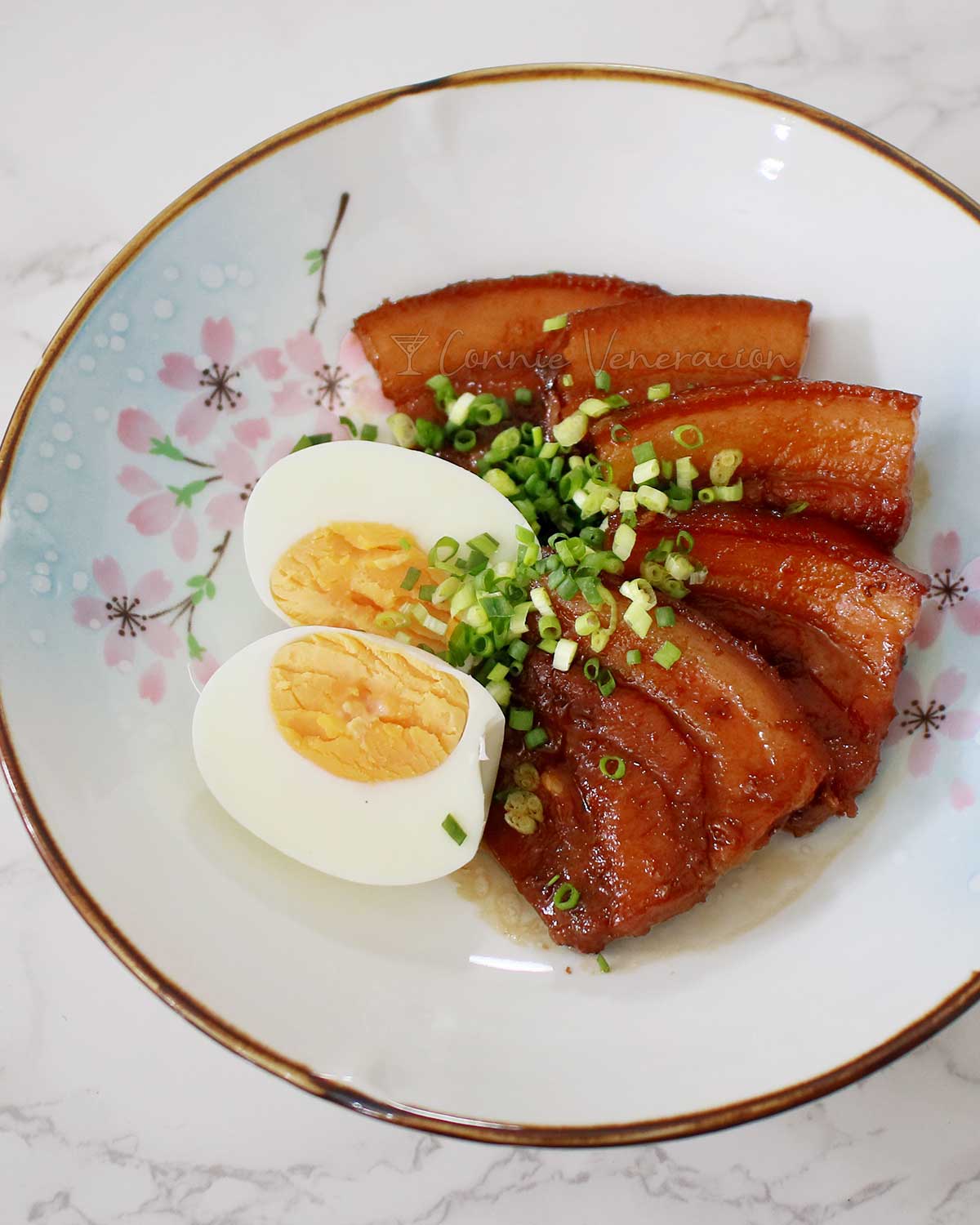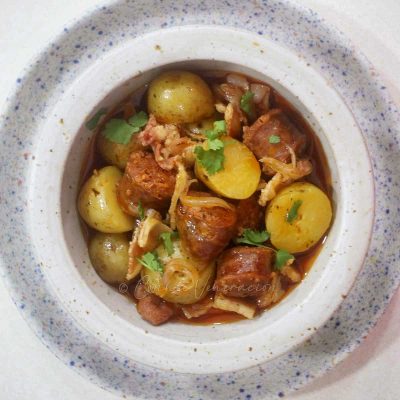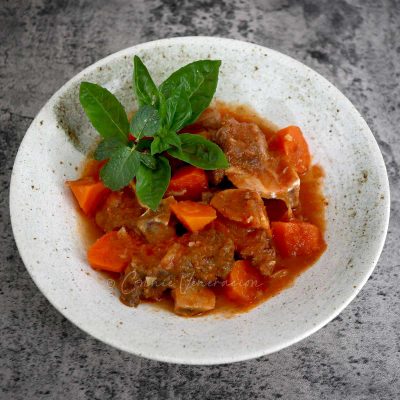There are several versions of buta no kakuni on the web — one flavors the braising liquid with dried sardines, another uses chicken stock and still another requires simmering the pork with aromatics before it is braised. All the Japanese braised pork belly recipes I have read, however, start with browning the pork.
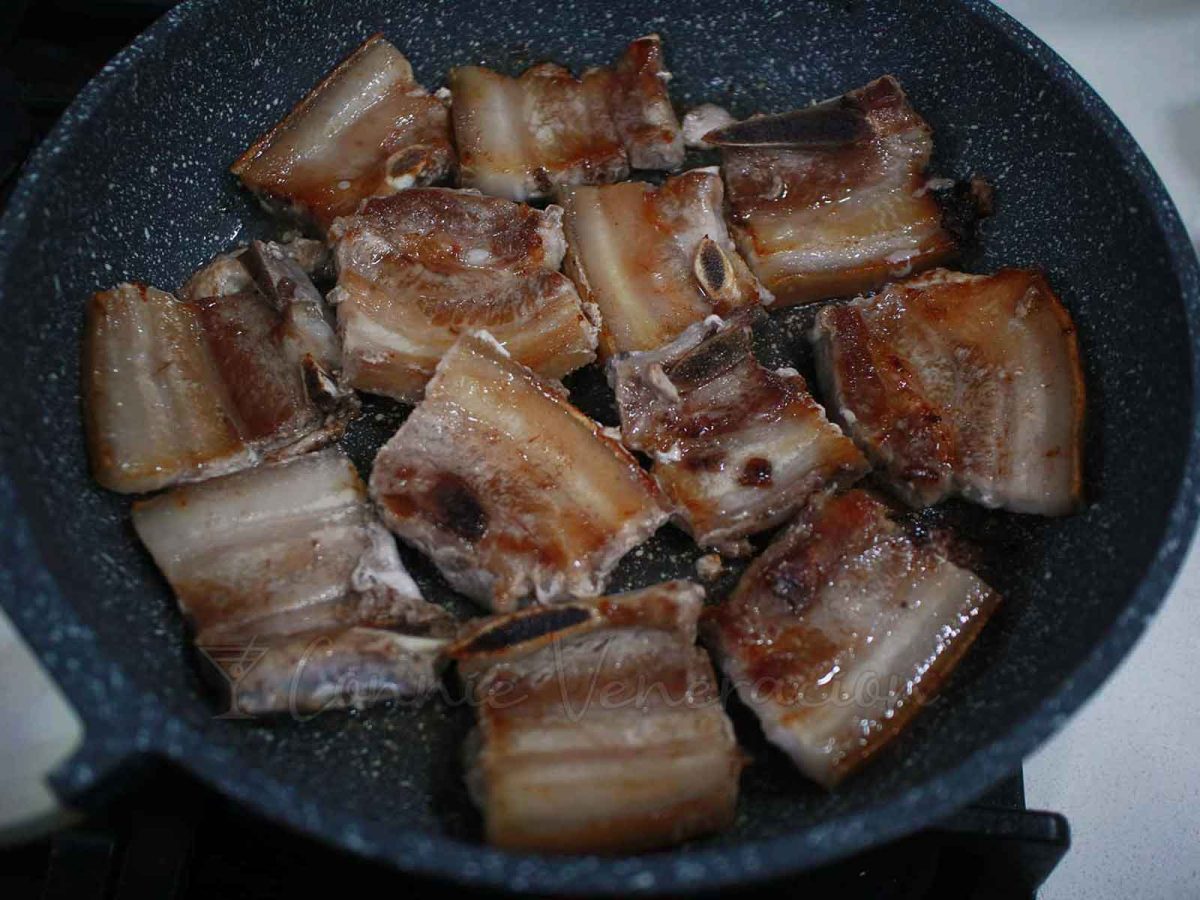
The pork does not need to be deep fried to brown the surface. Just coat the bottom of the pan with oil, lay the pork in a single layer, leave to brown the underside then flip to brown the opposite side. Remove the pork and transfer to plate.
You’ll have more oil in the pan at this point because the cooking oil would have gotten mixed with rendered pork fat. If you have more than a tablespoonful of fat in the pan, pour off the excess.
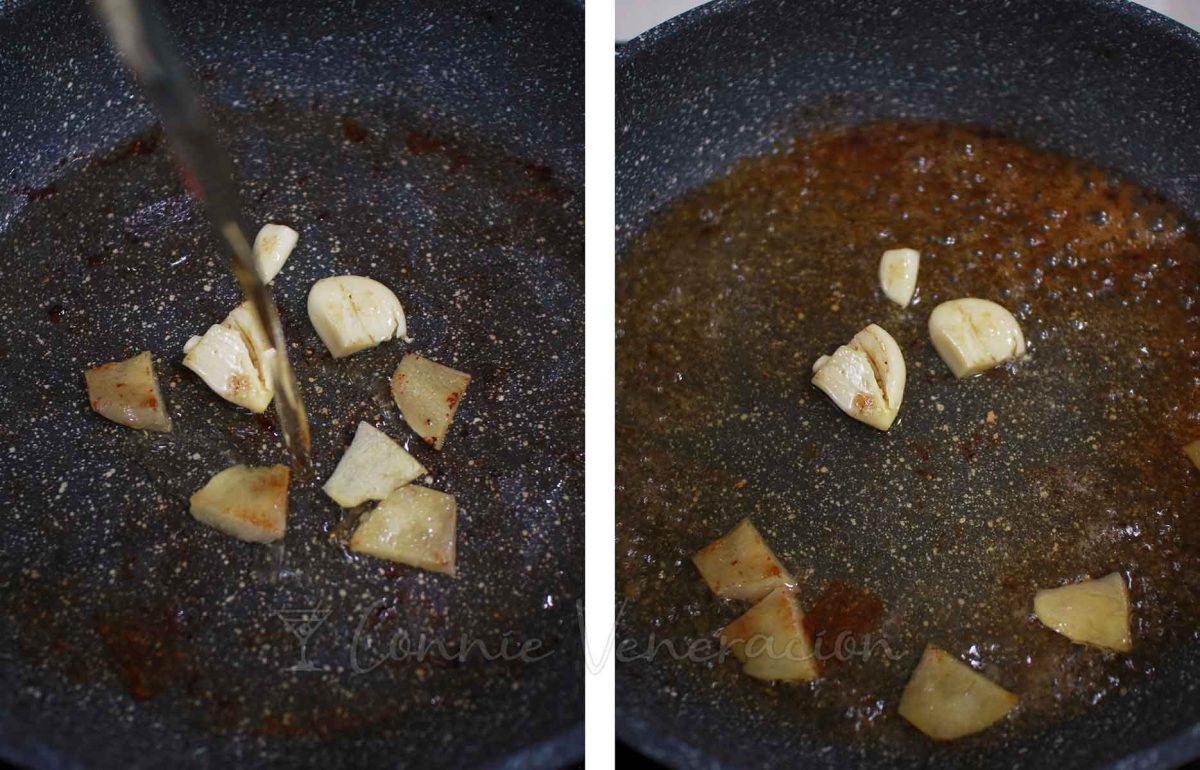
In the mixture of oil and pork fat, saute the garlic and ginger until aromatic. Pour in the mirin and leave to boil for a minute or so to allow the strong alcohol smell to dissipate.
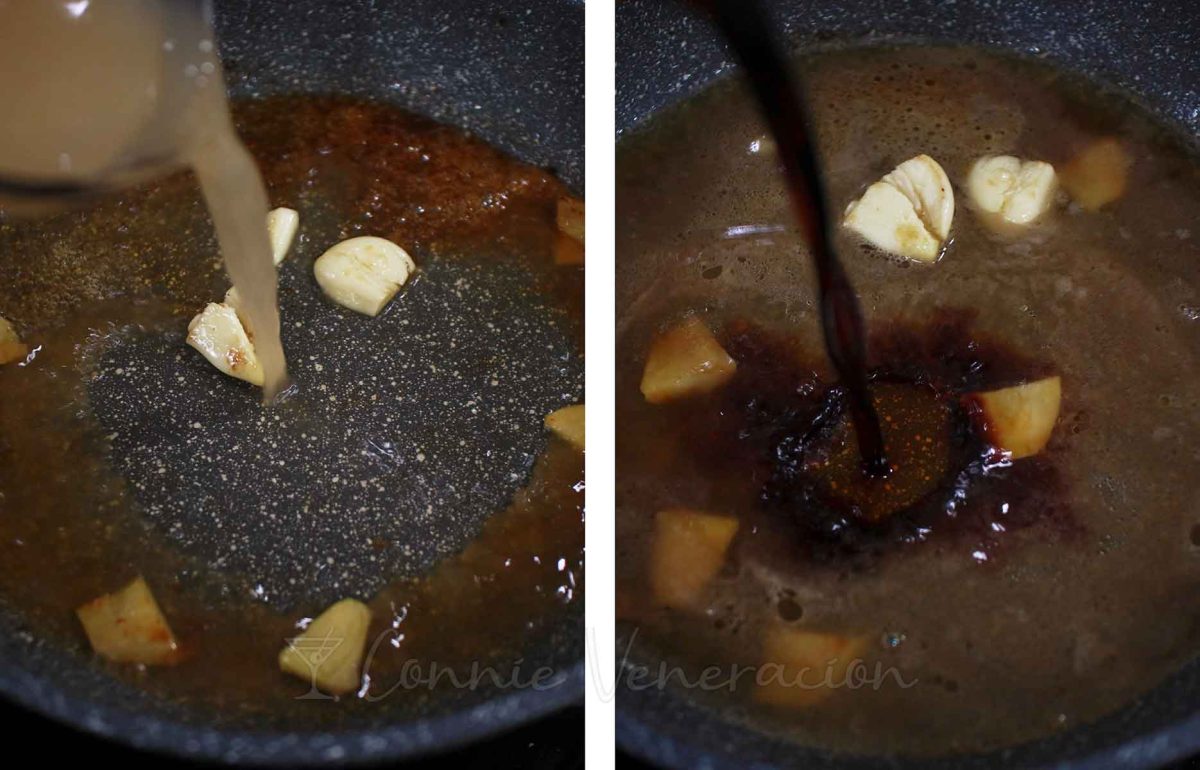
Pour in dashi and soy sauce, stir in sugar and bring to a simmer. Drop the pork slices in the sauce in a single layer and allow the sauce to simmer once more. Cover the pan and leave the pork to braise until tender.
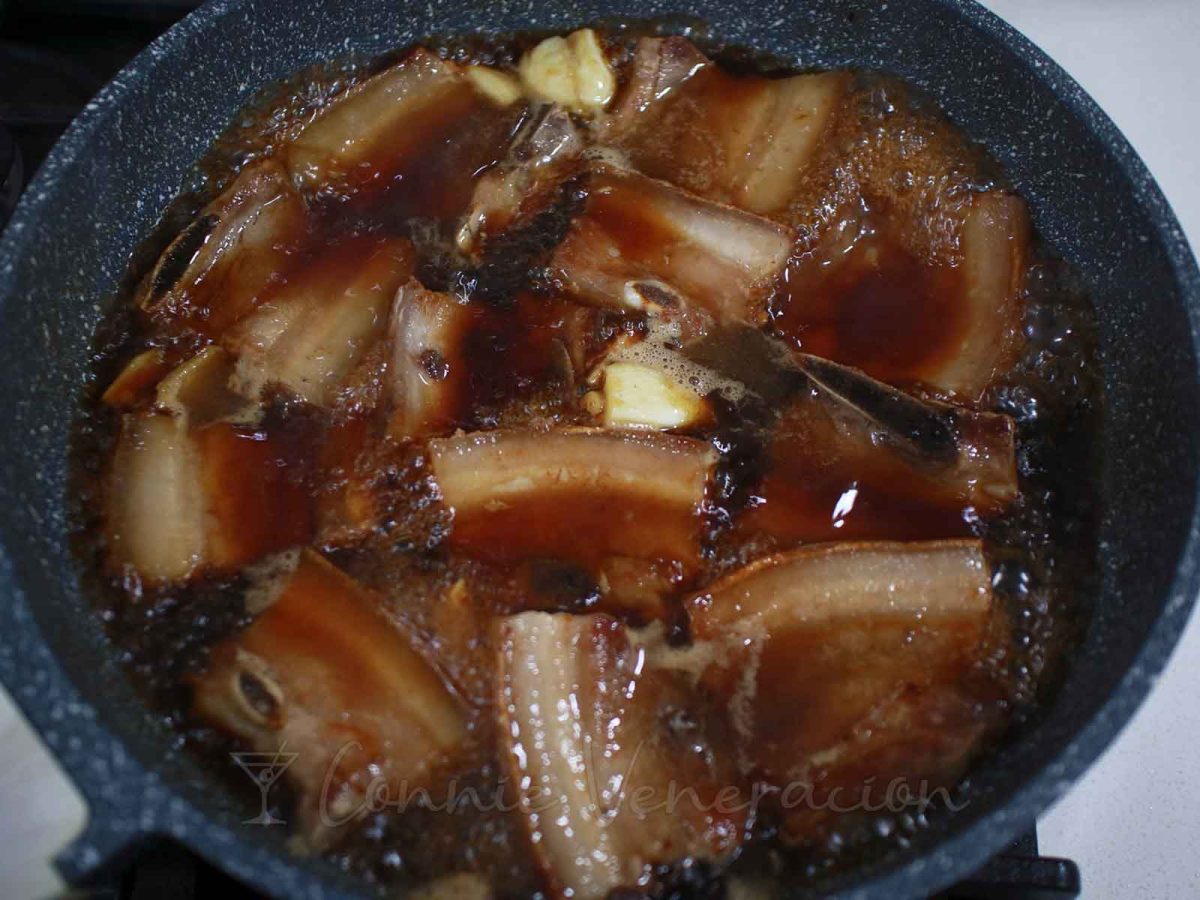
The exact cooking time depends on a number of factors including the age of the animal and the size into which the meat was cut. Check the liquid once in a while and make sure there is always at least half an inch of liquid in the pot.
Japanese braised pork belly (buta no kakuni)
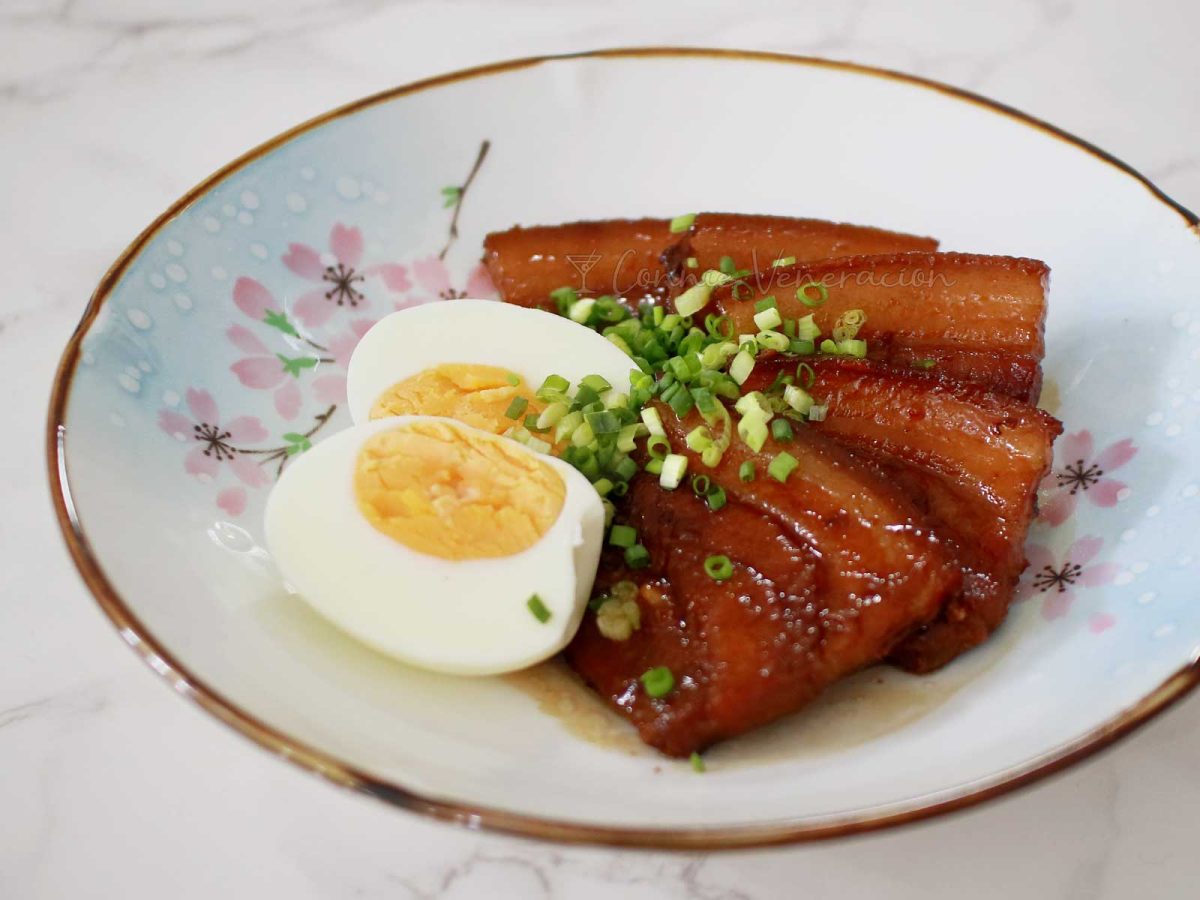
Ingredients
- 450 grams pork belly
- 1 tablespoon cooking oil
- 1 one-inch knob ginger peeled and sliced
- 3 cloves garlic peeled and lightly pounded
- ¼ cup mirin
- 2 tablespoons soy sauce
- 1 packet dashi granules (about one tablespoon) dissolved in one cup water
- 1 tablespoon sugar
- 3 hard boiled eggs shelled and cut in into halves
- sliced scallions to garnish
Instructions
- Cut the pork belly into slices about half an inch thick. Cut each slice into two-inch squares.
- Heat a wide shallow pan and pour in the cooking oil.
- Add the pork belly pieces and cook over high heat, turning them occasionally, until browned.
- Scoop out the pork and transfer to a plate. Keep warm.
- Heat the mixture of oil and rendered pork fat, and sauté the ginger and garlic until aromatic.
- Pour in the mirin. Boil until the liquid is reduced by half.
- Add the soy sauce, dashi and sugar.
- Arrange the pork in a single layer and braise until tender and the sauce has reduced to a couple of tablespoons.
- Serve Japanese braised pork belly hard boiled egg on the side and sprinkled with scallions.

